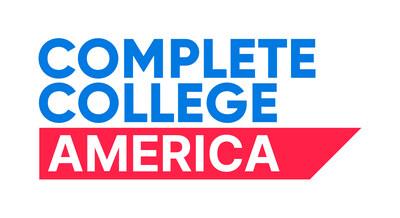Education
Colleges Aim for Higher Graduation Rates Through Smarter Scheduling

A new report from Ad Astra and Complete College America outlines strategies for improving college graduation rates through enhanced academic scheduling. Released on August 21, 2025, the report titled “Building a Healthy Culture for Academic Scheduling” emphasizes the role of effective scheduling in providing students with better access to necessary courses, ultimately aiming to reduce delays and improve completion rates.
The report highlights that many colleges treat scheduling as a secondary concern, yet it can significantly impact students’ paths to graduation. According to Sarah Collins, president of Ad Astra, “When, where, and how a class is offered might seem like a small detail, but it can determine whether a student makes it to graduation.” This focus on reorienting campus culture around scheduling could eliminate potential obstacles before they arise, allowing students to maintain their momentum towards graduation.
As college enrollment and completion rates stagnate across various institutions, the findings from Ad Astra’s 2024 Benchmark Report are concerning. It states that approximately 26% of program requirements are not available in the terms suggested by pathway guidance. Moreover, nearly one-quarter of course sections are overloaded, while 45% remain underutilized. These inefficiencies particularly affect working adults, caregivers, and commuting students, who may find it challenging to remain enrolled as a result of scheduling conflicts.
Institutions that have adopted improved scheduling practices have reported notable increases in student retention and credit accumulation. The report draws on national data which illustrates how outdated scheduling methods—such as required courses offered at conflicting times—create hidden barriers that hinder graduation.
Actionable Steps for Improved Scheduling
To address these challenges, the report provides five actionable steps for institutions to transform scheduling into a key driver of student success:
1. **Assess Current Practices**: Colleges should evaluate existing scheduling practices against projected course demand to identify bottlenecks and understand campus needs.
2. **Form a Strategic Scheduling Team**: By bringing together leaders, faculty, advisors, and student support staff, colleges can champion scheduling changes based on data regarding student impact and resource utilization.
3. **Implement Smart Scheduling Principles**: Aligning course offerings with structured pathways allows students to access necessary courses at appropriate times.
4. **Build Capacity**: Institutions must enhance technical skills related to data analysis and scheduling software while fostering adaptive skills like leadership and collaboration.
5. **Measure and Sustain Progress**: Tracking outcomes related to student success and efficiency will help colleges celebrate achievements and continue to refine their scheduling practices.
Successful Case Studies
The report illustrates how various universities have successfully implemented structured schedules and guided pathways to enhance student outcomes. For instance, the University System of Georgia has introduced its Momentum Year initiative, which utilizes block and default schedules. This approach assists first-year students in earning 15 credits while following clear, conflict-free pathways, thus boosting retention and on-time graduation rates.
In Texas, the Talent Strong Texas Pathways initiative has adopted 8-week terms to enhance credit momentum, persistence, and completion of credentials. Similarly, Tennessee’s Board of Regents has shifted to 7-week courses, providing greater flexibility for working adults, which has reportedly yielded stronger outcomes compared to traditional 15-week formats.
The findings and recommendations outlined in the report underscore the importance of effective scheduling as a crucial, yet often overlooked, tool for improving student success in higher education. By prioritizing student needs over administrative convenience, institutions can dismantle barriers and facilitate access to essential courses, ultimately supporting a higher number of students in achieving their academic goals.
For a comprehensive review of the report’s findings, case studies, and recommendations, interested parties can access the full paper online.
-

 Science3 months ago
Science3 months agoToyoake City Proposes Daily Two-Hour Smartphone Use Limit
-

 Top Stories3 months ago
Top Stories3 months agoPedestrian Fatally Injured in Esquimalt Collision on August 14
-

 Health3 months ago
Health3 months agoB.C. Review Reveals Urgent Need for Rare-Disease Drug Reforms
-

 Technology3 months ago
Technology3 months agoDark Adventure Game “Bye Sweet Carole” Set for October Release
-

 World3 months ago
World3 months agoJimmy Lai’s Defense Challenges Charges Under National Security Law
-

 Lifestyle3 months ago
Lifestyle3 months agoVictoria’s Pop-Up Shop Shines Light on B.C.’s Wolf Cull
-

 Technology3 months ago
Technology3 months agoKonami Revives Iconic Metal Gear Solid Delta Ahead of Release
-

 Technology3 months ago
Technology3 months agoApple Expands Self-Service Repair Program to Canada
-

 Technology3 months ago
Technology3 months agoSnapmaker U1 Color 3D Printer Redefines Speed and Sustainability
-

 Technology3 months ago
Technology3 months agoAION Folding Knife: Redefining EDC Design with Premium Materials
-

 Business3 months ago
Business3 months agoGordon Murray Automotive Unveils S1 LM and Le Mans GTR at Monterey
-

 Technology3 months ago
Technology3 months agoSolve Today’s Wordle Challenge: Hints and Answer for August 19









